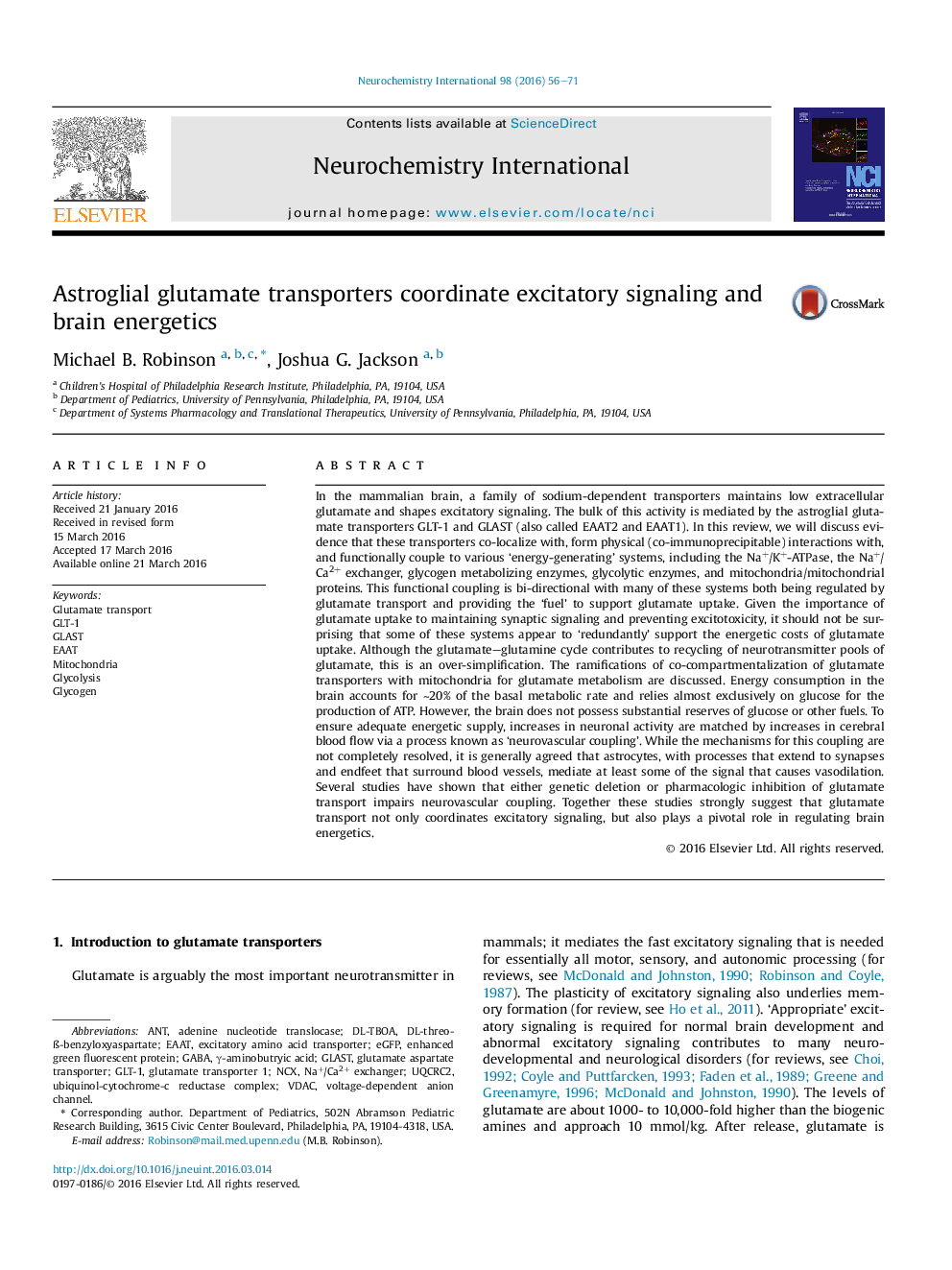| کد مقاله | کد نشریه | سال انتشار | مقاله انگلیسی | نسخه تمام متن |
|---|---|---|---|---|
| 2200250 | 1551277 | 2016 | 16 صفحه PDF | دانلود رایگان |

• We review evidence that GLT-1 and GLAST co-compartmentalize with, interact with, and couple to various sources of energy.
• We discuss our current understanding of the regulation of these interactions.
• We discuss the implications of this co-compartmentalization for glutamate metabolism.
• We conclude by suggesting some opportunities to further examine these interactions.
In the mammalian brain, a family of sodium-dependent transporters maintains low extracellular glutamate and shapes excitatory signaling. The bulk of this activity is mediated by the astroglial glutamate transporters GLT-1 and GLAST (also called EAAT2 and EAAT1). In this review, we will discuss evidence that these transporters co-localize with, form physical (co-immunoprecipitable) interactions with, and functionally couple to various ‘energy-generating’ systems, including the Na+/K+-ATPase, the Na+/Ca2+ exchanger, glycogen metabolizing enzymes, glycolytic enzymes, and mitochondria/mitochondrial proteins. This functional coupling is bi-directional with many of these systems both being regulated by glutamate transport and providing the ‘fuel’ to support glutamate uptake. Given the importance of glutamate uptake to maintaining synaptic signaling and preventing excitotoxicity, it should not be surprising that some of these systems appear to ‘redundantly’ support the energetic costs of glutamate uptake. Although the glutamate–glutamine cycle contributes to recycling of neurotransmitter pools of glutamate, this is an over-simplification. The ramifications of co-compartmentalization of glutamate transporters with mitochondria for glutamate metabolism are discussed. Energy consumption in the brain accounts for ∼20% of the basal metabolic rate and relies almost exclusively on glucose for the production of ATP. However, the brain does not possess substantial reserves of glucose or other fuels. To ensure adequate energetic supply, increases in neuronal activity are matched by increases in cerebral blood flow via a process known as ‘neurovascular coupling’. While the mechanisms for this coupling are not completely resolved, it is generally agreed that astrocytes, with processes that extend to synapses and endfeet that surround blood vessels, mediate at least some of the signal that causes vasodilation. Several studies have shown that either genetic deletion or pharmacologic inhibition of glutamate transport impairs neurovascular coupling. Together these studies strongly suggest that glutamate transport not only coordinates excitatory signaling, but also plays a pivotal role in regulating brain energetics.
Journal: Neurochemistry International - Volume 98, September 2016, Pages 56–71